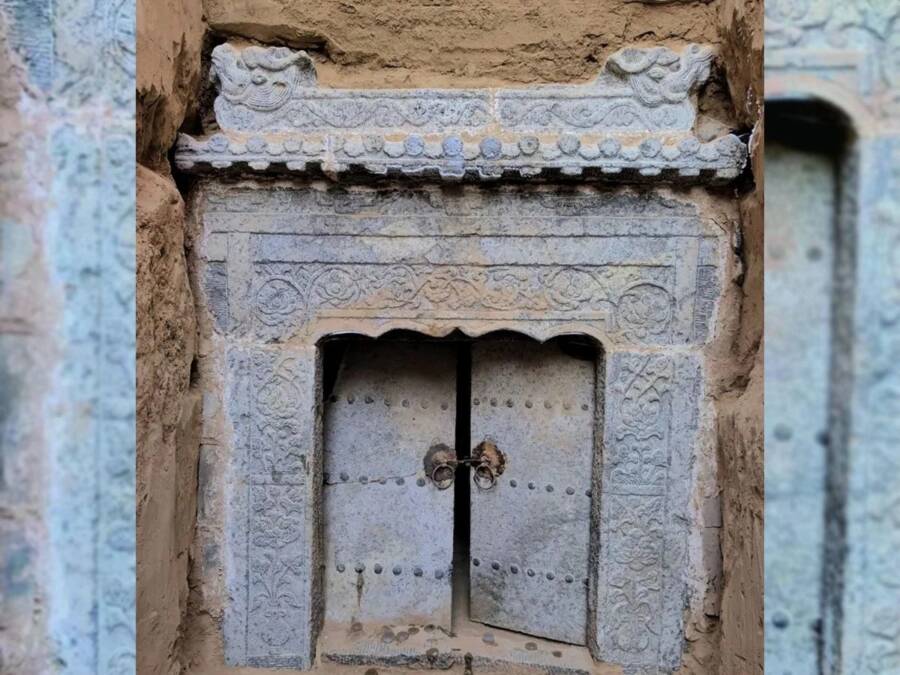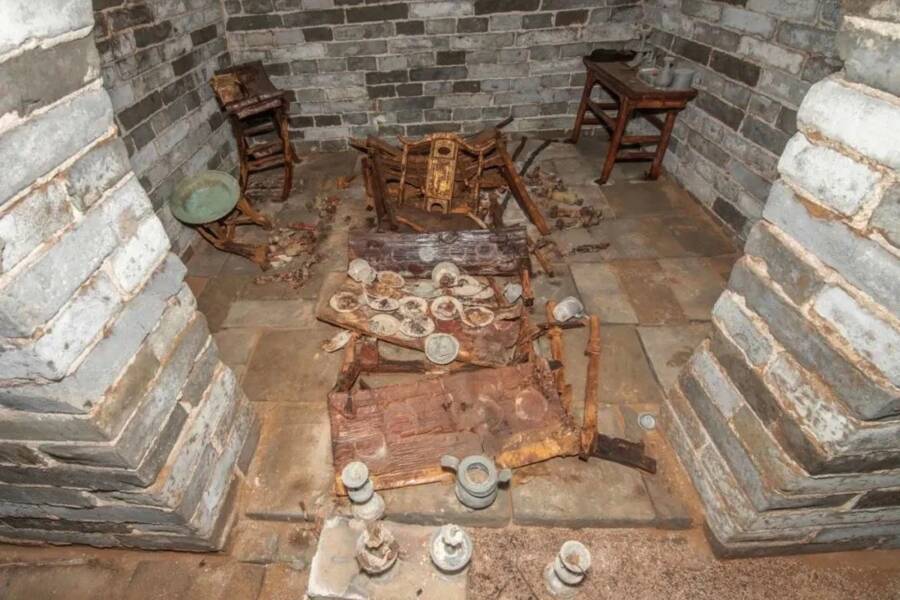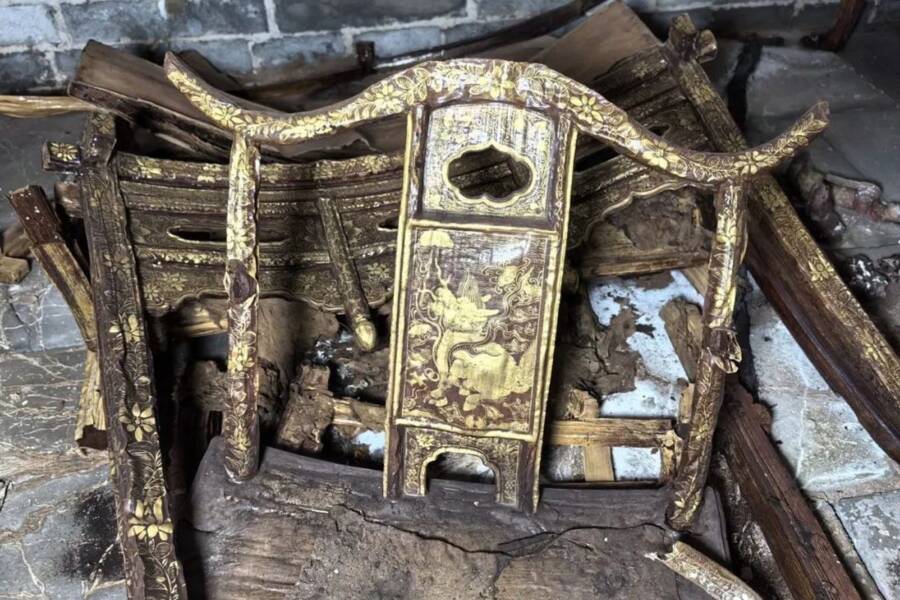Discovered in the city of Xinzhou, this Ming Dynasty tomb was filled with various offerings and artifacts.

Shanxi Provincial Institute of ArchaeologyThe entrance to the intact Ming Dynasty tomb in Xinzhou’s Xinfu District.
A joint team of archaeologists from China’s Shanxi Provincial Institute of Archaeology and the Xinzhou Municipal Institute of Cultural Relics recently discovered an astonishingly well-preserved tomb dating back to the Ming Dynasty.
The tomb was discovered during a series of excavations in which archaeologists examined 66 tombs from the Han, Tang, Jin, Yuan, Ming, and Qing dynasties, each located near the village of Hexitou in the Xinfu District of Xinzhou.
The discovery of this tomb offers new insight into the burial practices of the Ming Dynasty and the life of the tomb’s inhabitant.
A Look Inside This Ming Dynasty Tomb
As the researchers tell Heritage Daily, this ancient tomb contains a main burial chamber and an antechamber, as well as multiple branching passageways and niches.
They also discovered an epitaph that reads “Epitaph of the Prince of Ming Ru Hou’an,” possibly identifying the interred.

Shanxi Provincial Institute of ArchaeologyVarious artifacts discovered inside the tomb.
Inside the tomb were a number of artifacts, including wooden sacrificial tables, desks, and chairs, along with various writing tools like inkstones, calligraphy brush pens, and pen holders.
In the southern niche, they discovered four porcelain jars, plus an additional five porcelain jars in the northern niche alongside four porcelain bottles. Each of these contained either grains, liquids, or oils.
There were two coffins inside the tomb, one of which was decorated with side panels that featured images of peacocks, trees, and floral designs.
The other coffin, meanwhile, had a gold diamond-shaped pattern and bore an inscription that read “Ming Gu Rong Kao Hou Ru Wang Gong.” According to Ancient Origins, this translates to “Entrusted by the Ming Dynasty to serve the royal court as a palace official.”
The preservation of the artifacts was immaculate, making it a rarity in the province. The tomb now functions as a sort of Ming Dynasty time capsule.

Shanxi Provincial Institute of ArchaeologyThe ornately carved back of a chair.
The Story Of The Ming Dynasty And Its Dramatic End
The Ming Dynasty lasted from 1368 to 1644 C.E. It succeeded the Yuan Dynasty and preceded the Qing Dynasty, marking nearly three centuries of rule.
Founded by Zhu Yuanzhang — later referred to as the Hongwu Emperor — the dynasty was characterized by its strong central government, economic prosperity, and contributions to art and literature.
During the Ming era, China saw the construction of some of its most famous architectural achievements, including the majority of what is today the Great Wall of China and the Forbidden City in Beijing.
The period was also notable for the voyages of Zheng He, a Chinese admiral who led seven expeditions to the Indian Ocean, reaching as far as Africa.
The later years of the Ming Dynasty, however, saw challenges such as fiscal instability — exacerbated by rampant corruption and inefficient taxation — natural disasters, and rebel uprisings, the most significant of which was led by Li Zicheng, a former minor official turned rebel leader. His rebellion, which capitalized on the widespread discontent among the peasantry, managed to capture Beijing in April 1644, effectively marking the end of Ming rule in China.

Wikimedia CommonsThe Ming Tombs just north of Beijing.
Meanwhile, the Manchu people, under the leadership of the Qing Dynasty, seized this moment of weakness to act. As the Ming government struggled to quell these internal rebellions, the Manchu forces breached the Great Wall and advanced toward the Chinese heartland.
The Manchus took this opportunity to install themselves as China’s new leaders. While the transition from the Ming Dynasty to the Qing Dynasty was not a smooth one, the Qing would go on to rule until the early 20th century, making it China’s last imperial dynasty.
After reading about this recent discovery in China, see our list of 33 facts about China that will boggle your mind. Or, explore China’s uninhabited ghost cities through this gallery of 34 stunning photos.





